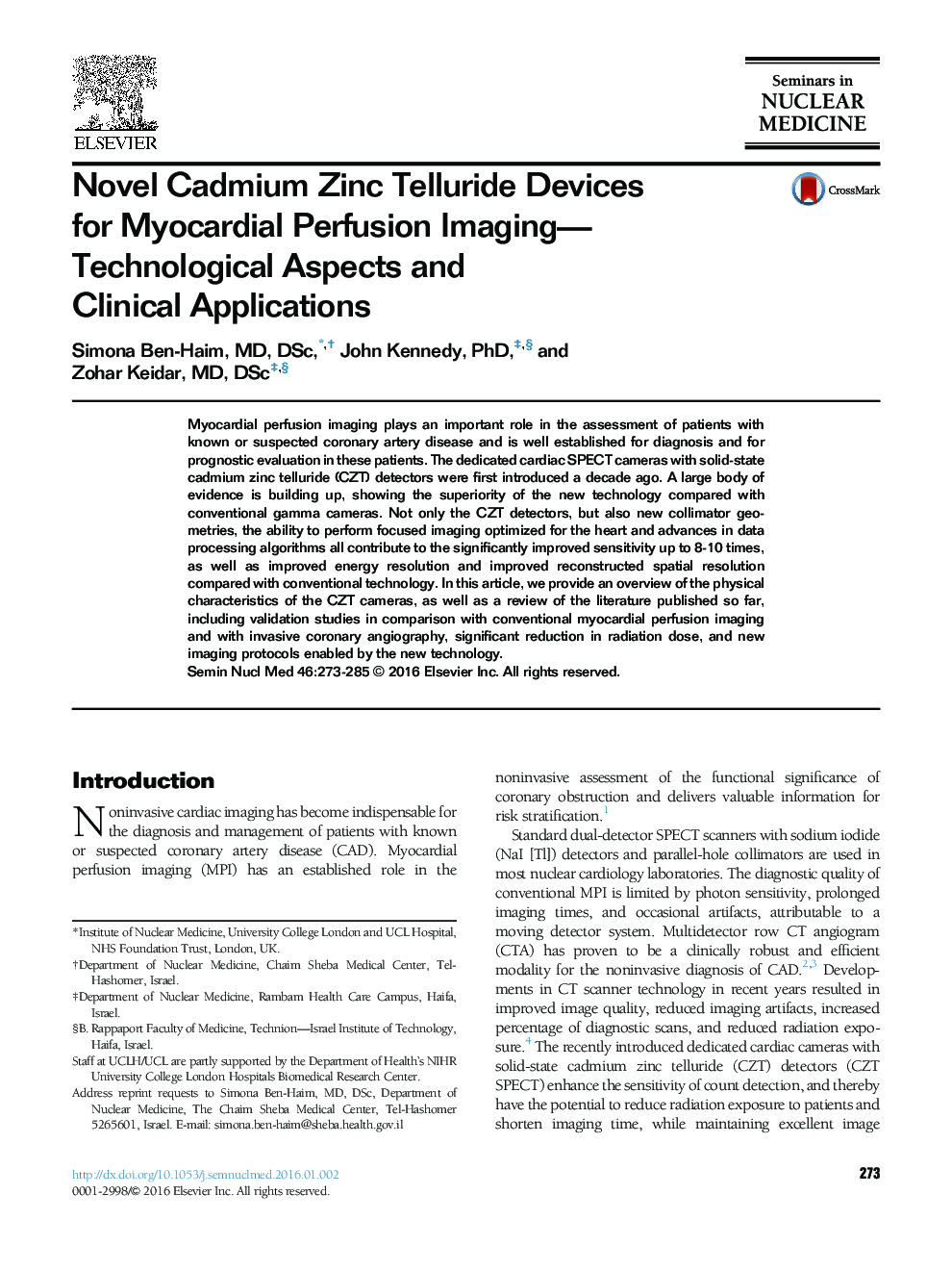| Article ID | Journal | Published Year | Pages | File Type |
|---|---|---|---|---|
| 6246201 | Seminars in Nuclear Medicine | 2016 | 13 Pages |
Abstract
Myocardial perfusion imaging plays an important role in the assessment of patients with known or suspected coronary artery disease and is well established for diagnosis and for prognostic evaluation in these patients. The dedicated cardiac SPECT cameras with solid-state cadmium zinc telluride (CZT) detectors were first introduced a decade ago. A large body of evidence is building up, showing the superiority of the new technology compared with conventional gamma cameras. Not only the CZT detectors, but also new collimator geometries, the ability to perform focused imaging optimized for the heart and advances in data processing algorithms all contribute to the significantly improved sensitivity up to 8-10 times, as well as improved energy resolution and improved reconstructed spatial resolution compared with conventional technology. In this article, we provide an overview of the physical characteristics of the CZT cameras, as well as a review of the literature published so far, including validation studies in comparison with conventional myocardial perfusion imaging and with invasive coronary angiography, significant reduction in radiation dose, and new imaging protocols enabled by the new technology.
Related Topics
Health Sciences
Medicine and Dentistry
Radiology and Imaging
Authors
Simona MD, DSc, John PhD, Zohar MD, DSc,
